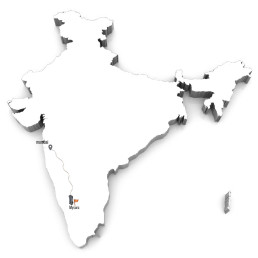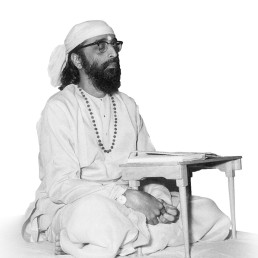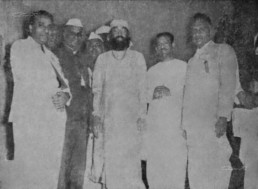
Jnana Yajna 98

Year & Dates:
December 14, 1961 to January 02, 1962

Yajna Topic:
Shrimad Bhagavad Gita- Chapter 2

Place:
Mysuru (Mysore), India
From the cosmopolitan Mumbai to the quieter Mysuru – Pujya Gurudev moved swiftly and gracefully, His pace and focus never broken. His 98th Jnana Yajna in Mysuru would be the 20th yajna of His in the year 1961, and the frequency of His travel, His yajnas, the silently hectic work in shaping Sandeepany Sadhanalaya, and His other commitments were on the rise. However, His poise and balance were spectacular.
On the evening of December 14, 1961, at 6:30 pm, in the ornate and expansive Hall of the Exhibition Buildings, the yajna was inaugurated by His Highness Sri Marthanda Varma, Eliyaraja of Travancore after Sri S. Channiah, the president of the yajna committee M.L.C., welcomed all.
In a crisp address, His Highness pinpointed the need for Bhakti and Ekaagrataa for spiritual evolution.
Knowledge and Compassion for All
Beginning His yajna with a clear differentiation between the externally-focused secular sciences and the introspective spiritual science, Pujya Gurudev talked about the longstanding analyses of the sages of India. Their wise and pure perceptions were compiled in the three founding scriptures – the Prasthaana Trayi, namely the Upanishads, the Brahma Sutras and the Bhagavad Gita. While the first two built the philosophy, the Gita showcased the practical application. Particularly when one has questions about duties in life like Arjuna did, the Gita holds wholesome answers, always relevant and timely. With that preface, Pujya Gurudev launched into His eloquent exposition of the overarching contents of Gita’s second chapter during His evening discourses. The mornings were devoted to the descriptive Atma Bodha of Adi Shankaracharya which, being a lucid guide for all the scriptural terms used, perfectly complemented the Gita, the essence of all upanishads.
In addition to the discourses, one former yajna feature was incorporated in the Mysuru yajna which was the Vishnu Sahasranama Laksharchana performed in the presence of Pujya Gurudev. The ardent worship from 7 am to 3:45 pm sanctified everyone who participated.
The members and devotees of Mysuru wanted to offer their seva to their adored Guru. Thus, the secretary of the Mission’s local branch published Kannada translations of the Gita verses, and Pujya Gurudev blessed that release on December 17, 1961. Further, Smt. Bhagyalakshmamma Ramappa, the president of the Balamahotsava Committee printed and donated the proceeds from 1000 copies of Sri Shankara Guru Stuti to Sandeepany Sadhanalaya.
An absolute delightful highlight of this yajna was the All Karnataka Chinmaya Bala Mahotsav conducted during December 26 – 28,1961. 300 children, from ages 6 to 16, bubbling with energy convened at the Dasara Exhibition grounds to rejoice in a 3-day “Chinmaya Way” camp replete with a parade, suryanamaskar sessions, chanting, story-telling, bhajans, dance, and dramas. Pujya Gurudev was enchanted by the little maestros in each category, and His mention of about 500 Bala Vihars functioning across India during the prize-giving ceremony was a joyful indication that the Chinmaya cultural revival had strong, young wings.
A Meditation Minute:
समस्तजनकल्याणे निरतं करुणामयम् । नमामि चिन्मयं देवं सद्गुरुं ब्रह्मविद्वरम् ॥१॥
samastajanakalyāṇe nirataṃ karuṇāmayam । namāmi cinmayaṃ devaṃ sadguruṃ brahmavidvaram ॥1॥
- Salutations to Sadguru Chinmaya the best among knowers of Brahman, who is all compassionate and remains ever engaged in the welfare of all people.
To Pujya Gurudev, we bow down with immense gratitude for His compassion that brought Him from the pristine Himalayas to spiritually enrich our homes and hearts. Every one of His tireless efforts have become an inspiring, perennial gift to generations.
Photo Gallery
Mysore committee members are sure to grab the opportunity for a photoshoot with Gurudev! Who wouldn't!
"Left to right: Dr. Mari Swami (Treasurer), Shri Chennaiah (President), Swamiji, Ealya Raja, Ramappa (Mission President), Satyanarayan Rao (Mission Secretary). Second Row: Left to right- Kampaigouda N. Rachaiyya (Minister) during 98thYajna"

“Think,” Says Pujya Gurudev
“Therefore, apple yourself,” advises Krishna, “to the devotion of action, Yoga.” In this context, again Vyasa is giving a definition of Yoga as he means it here. Earlier he had already explained that “Evenness of mind is Yoga.” Now he re-writes the same definition more comprehensively and says “Yoga is dexterity in action.”
In a science, if in every chapter, the very same term is defined differently, it would bring about confusion in its understanding. Then how is it that in the Science of Religion we find different definitions of the same term? This riddle gets itself solved as soon as we carefully try to understand the definition intimately. The earlier definition is being incorporated in the latter one for, the true dexterity of Yoga may be misunderstood as a mere ‘evenness of mind’ producing inaction and slothfulness. Here in this definition that misunderstanding is pointedly removed and this the Karma Yoga, as indicated in the all-comprehensive meaning implied herein, indicates the art of working with perfect mental equilibrium in all the different conditions indicated by the term “pairs of opposites” (Dvandvas).
From Tyagi Magazine
Don’t Give Up!
Emotions, when controlled, are a source of beauty and strength, but when they overpower you, they lead to tragedy and weakness. Being overwhelmed by emotions can result in a breakdown at the mental, emotional, and physical levels, leaving one unable to think rationally or find solutions to their problems. It’s essential to confront challenges with courage, resilience, and determination, rather than succumbing to feelings of impotence


